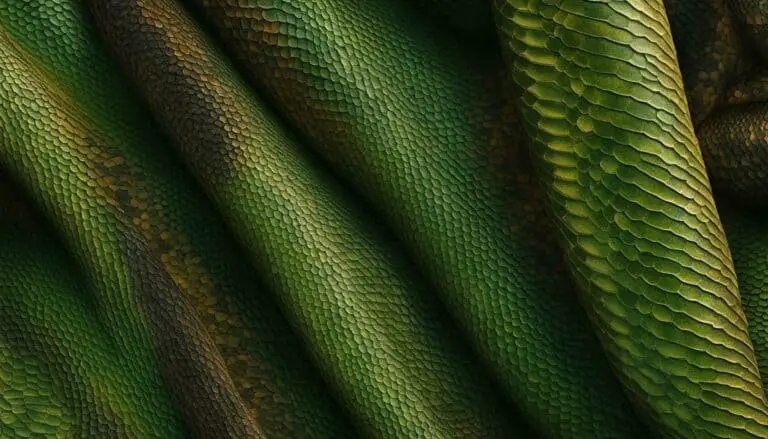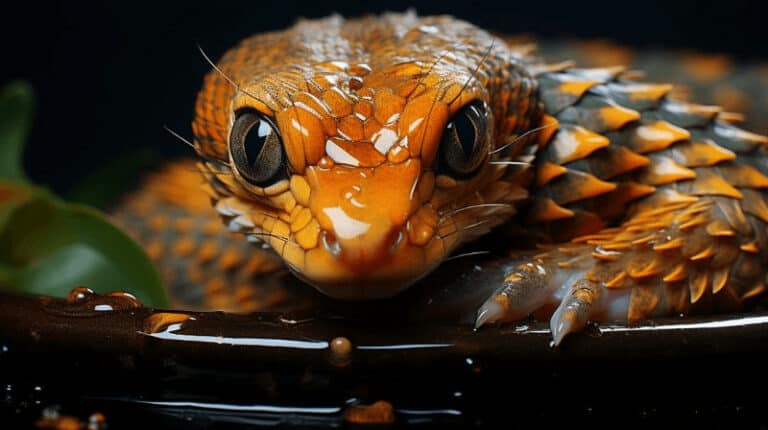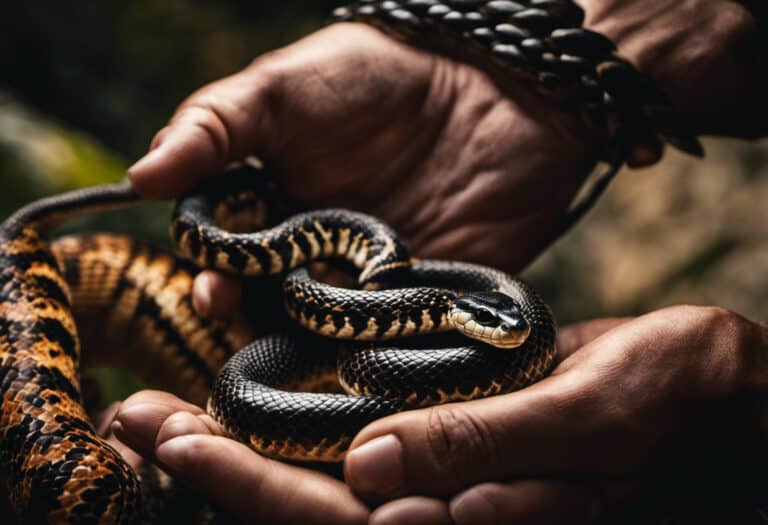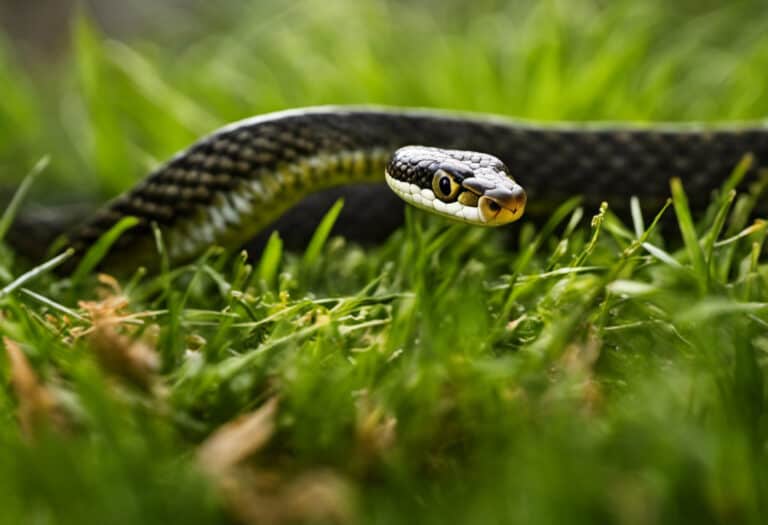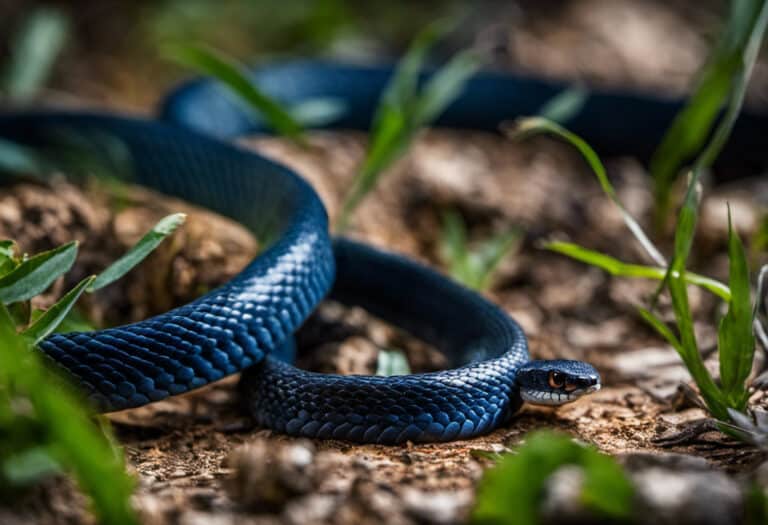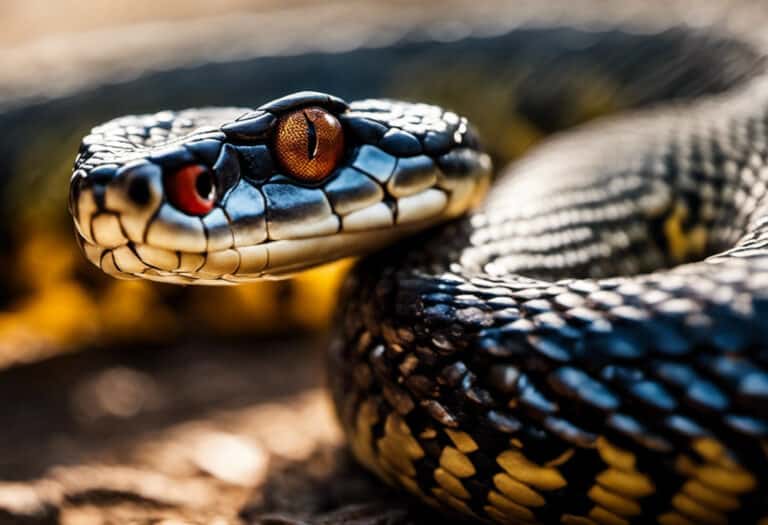Do Rattlesnakes Eat Other Snakes?
Do you ever wonder what it’s like in the intriguing world of rattlesnakes? Have you ever questioned whether they devour other snakes?
In this article, we’ll explore the captivating realm of rattlesnake diets and shed light on the question of their snake-eating habits.
Rattlesnakes are carnivorous reptiles that feast on small mammals, birds, amphibians, and even fellow reptiles. By utilizing their venom and heat-sensing abilities, these serpents employ various hunting techniques to locate and capture their prey.
Join us on this adventure to unravel the secrets of rattlesnake diets and discover if they truly consume other snakes.
Key Takeaways
- Rattlesnakes are known to consume other snakes.
- The frequency of snake consumption varies among rattlesnake species.
- Consuming snakes provides rattlesnakes with essential nutrients.
- The size and type of snake consumed can impact rattlesnake energy intake.
Types of Snakes Consumed by Rattlesnakes
Rattlesnakes can consume smaller snakes as part of their diet, depending on the species. Several factors affect rattlesnake predation on snakes, including the size and availability of prey.
In general, rattlesnakes are known to prey on smaller snake species, such as garter snakes and rat snakes. However, larger rattlesnake species may also consume other venomous snakes, like copperheads or coral snakes.
The ecological implications of rattlesnake consumption of snakes are significant. By preying on other snake species, rattlesnakes help regulate snake populations, preventing overpopulation and maintaining a balanced ecosystem.
Additionally, the consumption of snakes provides rattlesnakes with essential nutrients, contributing to their overall diet diversity. The availability and abundance of snake species in their habitat influence rattlesnake population dynamics, making snake consumption an important aspect of their survival and ecological role.
Hunting Techniques Used by Rattlesnakes to Catch Other Snakes
To catch other snakes, you rely on your venom to subdue them and your specialized fangs for efficient prey capture. As a rattlesnake, your hunting strategies are highly effective and specialized.
When hunting other snakes, you employ ambush tactics, patiently waiting for the perfect opportunity to strike. Your heat-sensing pits allow you to locate warm-blooded prey, including other snakes, with precision.
Once you strike, you inject venom into your prey, immobilizing them and ensuring a successful capture.
Your consumption patterns regarding other snakes may vary depending on their availability in your habitat. While some rattlesnake species consume other snakes more frequently, others prioritize different prey depending on availability.
However, consuming other snakes can provide you with essential nutrients and contribute to the overall diversity of your diet.
Factors Influencing the Frequency of Snake Consumption by Rattlesnakes
Factors influencing the frequency of snake consumption by rattlesnakes include:
- The availability of snakes in their habitat
- Their dietary preferences
Rattlesnakes may consume snakes more frequently if they’re abundant and easily accessible.
Additionally, the size and type of snake consumed can affect the energy intake of rattlesnakes, potentially influencing their population dynamics.
Snake Availability and Diet
The availability of snakes in their habitat can impact the diet of rattlesnakes. Rattlesnakes, being carnivorous reptiles, primarily feed on small mammals, birds, amphibians, and other reptiles. The types of reptiles consumed by rattlesnakes include lizards, smaller snakes, turtles, skinks, and even iguanas.
To hunt, rattlesnakes use their venom to subdue prey and rely on their heat-sensing pits to locate warm-blooded targets. Their hunting techniques involve ambush strategies, striking and injecting venom into their prey using specialized fangs.
The frequency of reptile consumption varies among rattlesnake species, with some consuming reptiles more frequently than others.
The availability of reptiles in their habitat influences their consumption, and they may prioritize other prey depending on availability. Consuming reptiles provides rattlesnakes with essential nutrients and contributes to their overall diet diversity.
The size and type of reptile consumed can impact rattlesnake energy intake, and snake availability can influence rattlesnake population dynamics and predation patterns.
Rattlesnake Population Dynamics
You can see variations in rattlesnake population dynamics based on reptile consumption and availability in their habitat. Rattlesnake predation patterns play a crucial role in shaping their population dynamics.
The ecological implications of snake consumption are significant, as it affects both the rattlesnake population and their prey species. When rattlesnakes consume other snakes, it can lead to a decrease in the population of those snake species.
This can have cascading effects on the ecosystem, as snakes play important roles in controlling rodent populations and maintaining the balance of the food chain.
Additionally, the availability of snakes in their habitat influences rattlesnake population dynamics. If snake populations decline due to various factors such as habitat loss or human activities, it can impact the rattlesnake population, potentially leading to population declines or even local extinctions.
Understanding the relationship between rattlesnake predation patterns, snake consumption, and their ecological implications is essential for effective conservation and management strategies.
The Impact of Consuming Other Snakes on Rattlesnake Diet Diversity
Consuming other snakes can enhance the diet diversity of rattlesnakes and provide them with essential nutrients. This practice has a significant impact on the ecosystem and the predator-prey relationship within it.
Rattlesnakes are known to consume various types of snakes, including smaller snakes, such as garter snakes, and even other rattlesnake species.
By incorporating snakes into their diet, rattlesnakes are able to expand their food sources and increase the overall diversity of their diet.
This not only ensures that they receive a balanced intake of essential nutrients but also helps regulate the population of other snake species.
The table below summarizes the types of snakes consumed by rattlesnakes, highlighting the importance of this behavior in their diet and the overall ecosystem.
| Types of Snakes Consumed by Rattlesnakes |
|---|
| Garter snakes |
| Other rattlesnake species |
| Rat snakes |
| King snakes |
| Water snakes |
Energy Intake Considerations When Rattlesnakes Eat Other Snakes
When incorporating other snakes into your diet, it’s important to consider the impact on your energy intake. Rattlesnakes, being carnivorous reptiles, primarily feed on small mammals, birds, amphibians, and even other reptiles.
However, the energy expenditure required to capture and consume different prey sizes varies. Prey size directly affects the energy intake of rattlesnakes. Consuming smaller snakes may require less energy compared to larger snakes. This is because larger snakes provide a greater amount of energy but may require more effort and energy to capture and digest.
Rattlesnakes must carefully balance their energy expenditure and prey size to ensure optimal energy intake. By doing so, they can maintain their freedom to hunt and survive in their natural habitats.
The Role of Snake Consumption in Rattlesnake Population Dynamics
Snake consumption plays a crucial role in rattlesnake population dynamics, affecting their energy intake and overall survival in their natural habitats. Rattlesnakes are opportunistic predators and their prey selection is influenced by the availability of snakes and other potential food sources.
While rattlesnakes primarily feed on small mammals, birds, amphibians, and lizards, they’re also known to consume other snakes. The ecological role of rattlesnakes in snake population control is significant. By preying on snakes, rattlesnakes help regulate the population of these reptiles, maintaining a balance within the ecosystem.
Snake availability and prey selection play a key role in determining the frequency and type of snakes consumed by rattlesnakes. This consumption not only provides rattlesnakes with necessary nutrients but also contributes to the overall diversity of their diet.
In this way, snake consumption plays a vital role in shaping rattlesnake population dynamics and maintaining ecological balance.
Frequently Asked Questions
How Do Rattlesnakes Identify and Locate Other Snakes as Prey?
Rattlesnakes identify and locate other snakes as prey through their predatory instincts and snake behavior. They rely on their heat-sensing pits to detect warm-blooded prey and employ ambush hunting strategies, striking and injecting venom into their prey.
Are There Any Specific Types of Snakes That Rattlesnakes Prefer to Eat?
Rattlesnakes exhibit various behaviors related to snake predation. They may prefer certain types of snakes as prey, which impacts their diet diversity and energy intake. The availability of snakes in their habitat influences their consumption patterns.
Do Rattlesnakes Use the Same Hunting Techniques When Consuming Other Snakes as They Do With Mammals and Birds?
When consuming other snakes, rattlesnakes may use similar hunting strategies as with mammals and birds. The digestion process for snakes may differ from other prey, but the specifics would depend on the species.
Does the Frequency of Rattlesnakes Consuming Other Snakes Depend on the Availability of Other Prey in Their Habitat?
The frequency of rattlesnakes consuming other snakes depends on the availability of other prey in their habitat. When other prey is scarce, rattlesnakes may compete with other predators, impacting the ecosystem.
How Does Consuming Other Snakes Impact the Overall Diet Diversity and Nutritional Intake of Rattlesnakes?
Consuming other snakes impacts rattlesnakes’ diet diversity and nutritional intake. It provides essential nutrients and contributes to overall diet diversity. Venom plays a crucial role in subduing prey, highlighting its significance in the rattlesnake’s ecosystem impact.
Conclusion
In conclusion, despite the common perception that rattlesnakes consume other snakes, our exploration into their diet has revealed a surprising twist. While rattlesnakes are indeed formidable predators, their preference lies in devouring small mammals, birds, and amphibians.
The consumption of other snakes, although not unheard of, is a rarity in their diet. This unexpected finding adds a layer of intrigue to the intricate dynamics of rattlesnake ecosystems, reminding us that nature’s secrets are often filled with unexpected twists.
